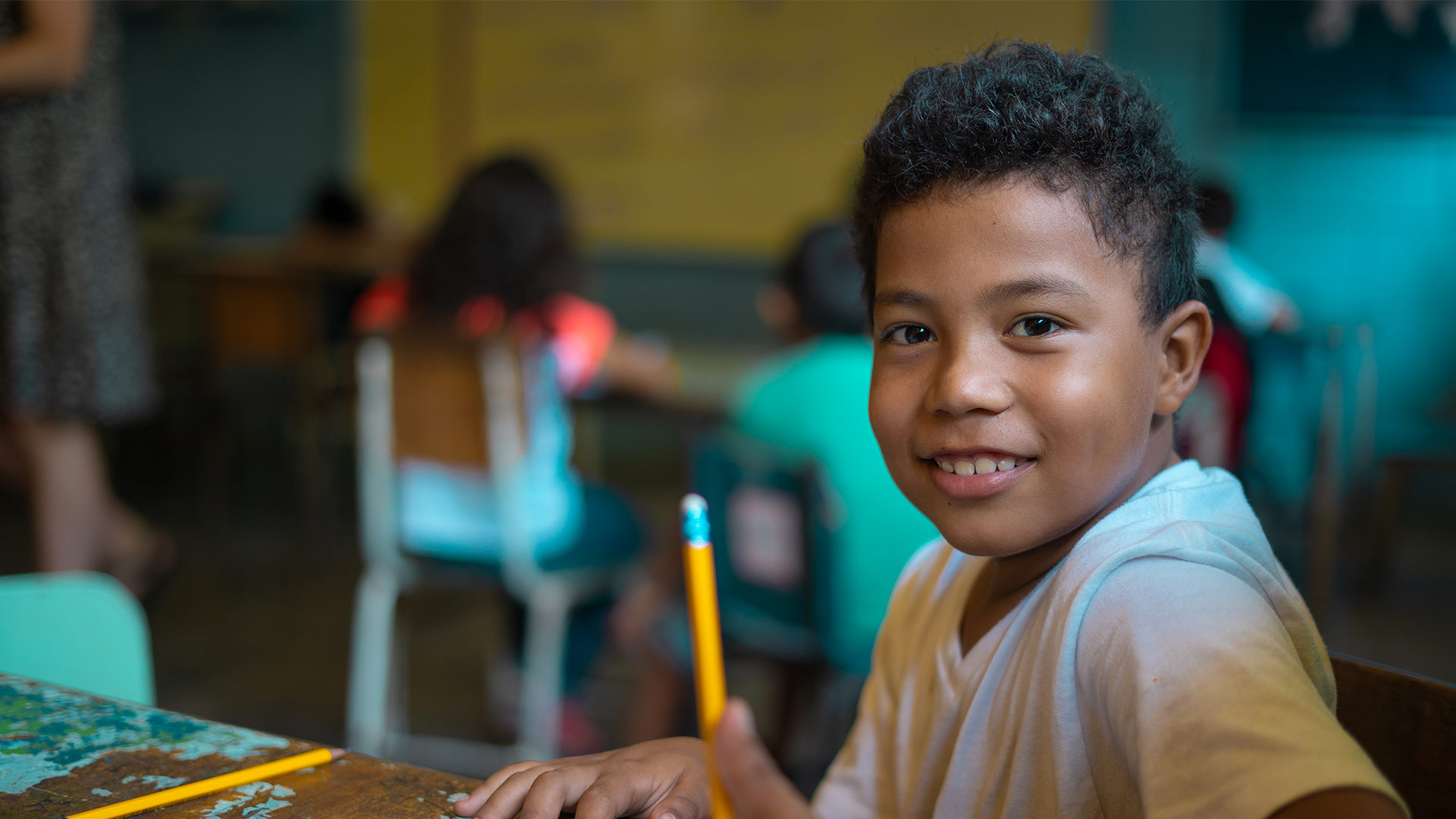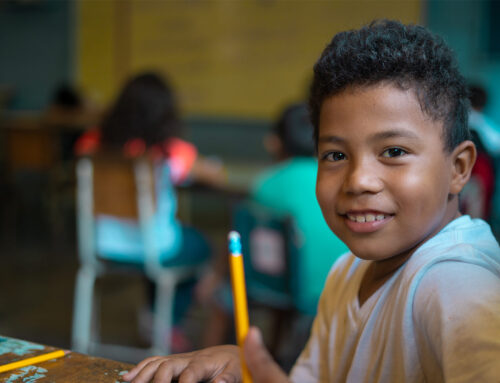In Honduras, it does not simply drizzle. It is either extremely hot and sunny, or it rains so hard that it feels like the sky is falling. At this moment, the latter is true. I am only half terrified as I hide in my bed and try to ignore the water intermittently leaking on my head. I should most definitely be lesson planning, but I am going to take the rain as a sign to procrastinate and write about my first week as a teacher instead.
Yes, I am officially a teacher… in Honduras, where one does not need a four-year degree to teach, but rather a penchant for screaming children and a desire to make a difference. Anyway, I have been in my classroom for five whole days and I am still alive. Even more impressive is the fact that all of the kids are still in one piece! I have to say, this teaching thing is hard… harder than anything I have ever done. I have gone skydiving, cliff-jumping, waterfall hiking, etc. but nothing has pushed me farther outside of my comfort zone than this experience (also nothing else has been quite so terrifying). My 22 students are full of energy, life, questions, and mischief. They have already driven me to the verge of tears, destroyed my voice, and called me names. Somehow, though, I am finding myself falling in love with each and every one of them.
It’s strange that school is finally underway, because for the past 7 weeks, I have had the first day of school looming in the back of my mind constantly. When I woke up on Monday morning, I was very nervous, but ready to actually start. As my kids began to arrive one by one, I toyed with the idea of running or faking sick. I ultimately decided to stick it out for their sake. I could have had 7 years of training, and still nothing would have prepared me for the moment the first bell rang and I had 22 little faces staring up at me.
The first day was a rush of adrenalin and emotions. I recently read that teachers make more split-second decisions than any other job and I do not doubt it. You cannot let your guard down for even one second, or you will have children playing with scissors, climbing on tables, or using sharpie on your posters…not that any of these things happened in my classroom. The best way that I can describe teaching kids is to recall the sour-patch kids commercials with the motto “first they’re sour, then their sweet.” One minute, my students will make me want to rip my hair out and the next they are hugging me and telling me they love me.
Like the weather here, student behavior works in extremes and I have been warned that there are some day the kids are simply going to win. I am kind of convinced that my students meet before class to discuss whether or not they are going to behave as a group. So far, I’ve only had one day that truly made me question my sanity for trying to teach. If I can keep these days to once a week, I think I will be okay.
/ / / /
Not Like Other Schools: In addition to managing a class of 22 little children, this job poses some other challenges. The first being the fact that most of the children speak little to no English. I realized this within the first 10 minutes of teaching, when I got blank stares and not a single student followed my directions. You might be surprised to hear that I have become quite fearless at singing in front of groups of people (we shall see if that is still true when said audience is not a bunch of 6 year olds). I have also began to learn “teacher talk”, which is basically a language consisting of sign language and simplified English. If I tell you to “raise a quiet hand” next time I see you, I apologize.
The second challenging aspect of this job is the lack of resources that we have to work with. Unlike many American schools, where classrooms are complete with Smartboards, I-Pads, and other such luxuries, here we have to get creative. This may mean handwriting a class set of worksheets when the power suddenly goes out (and stays out for the first three days of class), accounting for pencils as though they were gold, and relying on one another for inspiration and ideas. I want to be clear that we are not struggling to get by, we just have to be mindful of not overusing what we do have. An example of this in my own classroom can be illustrated by the toilet paper. Because toilet paper is so expensive, we hang it outside the bathroom and have marks on the wall indicating how much the students can use. I let my Honduran counterpart explain to the children why there is a line labeled #1 and #2.
Along with a lack of physical materials, there are not as many “resource” or behavioral teachers here. As a result, some of the students in our classrooms (who would probably benefit from having one-on-one attention) bring certain behavioral issues to the table. From speaking to teachers in the States, I know this is not just a Honduran issue. Nonetheless, it makes for an interesting experience. I have been trying to figure out a way to manage my “challenging” students to ensure they are not distracting the class, but still receiving a quality education themselves.
The last difficult aspect of teaching here at Amigos De Jesus is that half of my students come from the Hogar (children’s home) and half of them come from the community. This is challenging for several reasons. For one, the students in the Hogar are more like siblings than classmates, so trying to convey that they must interact one way at their home and one way at school is difficult. When they hit or tackle one another my initial reaction is to yell, but I am trying to put myself in their shoes. Another challenge that the neighborhood/Hogar divide brings is the issue of inequality. Simple things like snack time or lunch must be navigated carefully, as to not make the hogar kids feel inferior.
The last issue that goes along with teaching students from a children’s home is that these students come with a lot of baggage. While I do not know the stories of my students, it is critical that I remember there is probably reason for their poor behavior. When they are talking out of turn, yelling, hitting, ignoring me, pulling hair, trying to steal, you name it, I need to practice compassion. This is not as easy as I had hoped. I know that I am only human, but I have been getting frustrated at how quickly I can get frustrated with the children. Just the other day after lunch (easily the most challenging hour and a half of every day) a student talked out of turn yet again. I was winding up to yell at him, when he said “Miss, I love you.” That moment made me realize that being strict and having high expectations for my students is necessary, but my main job is to love them and empower them to grow into capable people.
I think most people have heard the Maya Angelou quote, “people may not remember exactly what you did, or what you said, but they will always remember how you made them feel.” This is so true with teaching. At the end of the day whether or not my students learn their addition facts, or about the 5 senses, is not as important as the love that I provide them. As the year progresses, I hope to remember this and dig deep to be empathetic and kind. Even when all 22 of them are yelling “miss, miss, miss, miss” (a sound that haunts me as I try to go to sleep), even when they color on their neighbor after I just told them not to, even when they swear at me in Spanish, and even when they make drive me crazy. Because being these students teacher is an incredible responsibility and, even more, an incredible privilege.
This past week was not as terrifying as I had imagined, but I still have a long way to go. My roommate always says “the children might not have fun, but I am going to” and I have adopted that mantra. I know there are going to be difficult days to come, but I am already so excited to see what the year brings.







